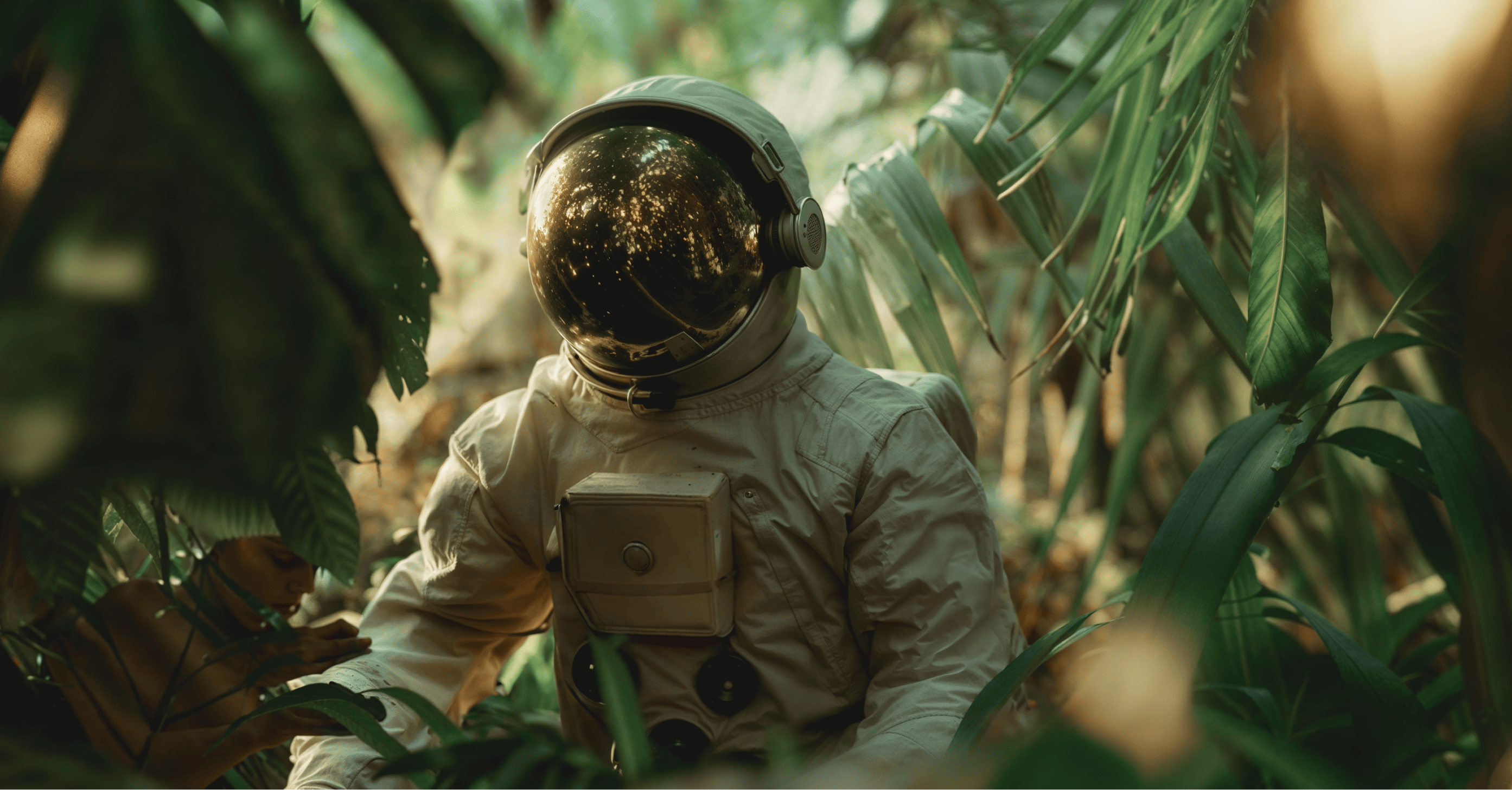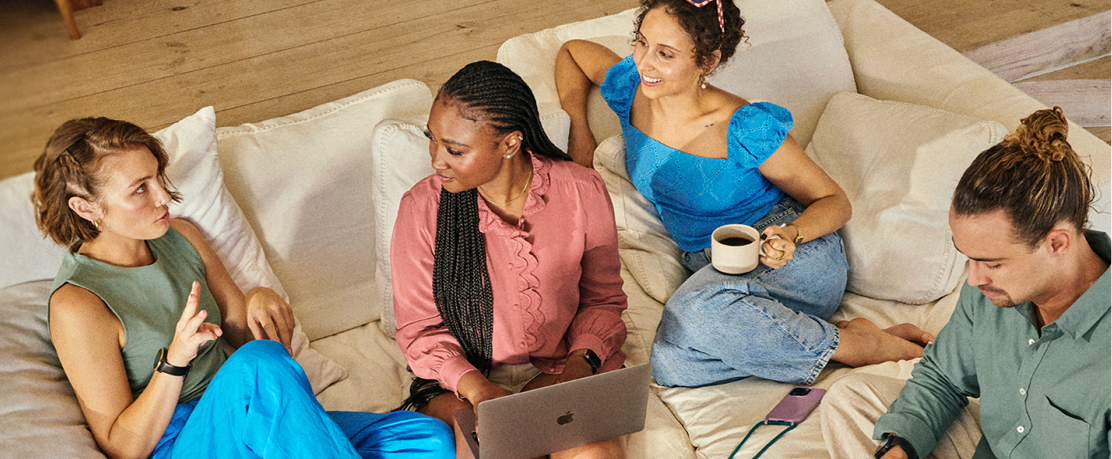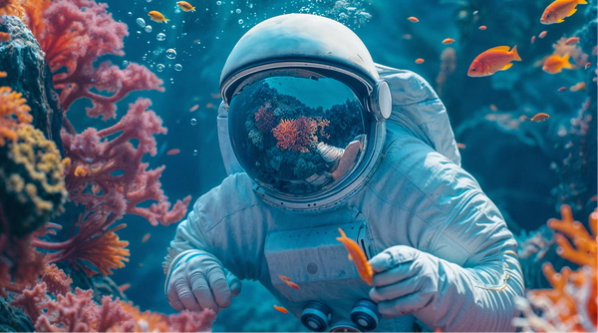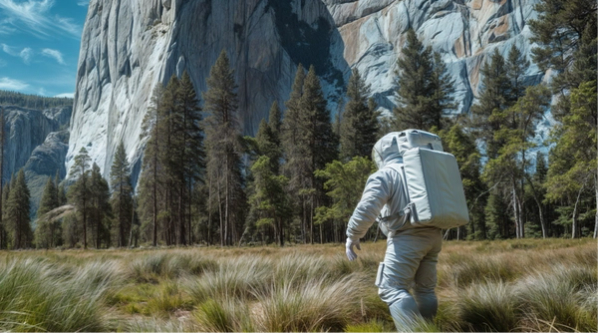The Ultimate 5-Step Graphic Design Process

In 2024, having a structured design process is essential for producing high-quality, consistent and impactful designs. From structuring a creative brief with impact to infusing human creativity into the process, graphic design is both an art and a science. Let’s see what the experts have to say as we at Superside dissect the 5-step graphic design process that every creative should know.
For any design team, having an established graphic design process will lead to better designs, higher output and most importantly, remove a lot of potential frustration.
The process of starting a graphic design project has changed drastically over the years. Now, AI-powered design is the driving force behind concept development and the design thinking process, which makes it necessary to think about the different perspectives infused into each design stage.
If you’re leading graphic designers or looking to streamline the process, then let’s take a look at the 5 most essential steps of the graphic design process.
The Importance of a Structured Design Process
Graphic design is an intricate blend of creativity and strategy, requiring a structured approach to ensure that the final product not only looks stunning but also effectively communicates the intended message.
It all starts with critical thinking, ideas and market research, and then, every graphic designer, including the most famous graphic designers in history, infuses their thoughts into the graphic elements of a project using the latest software tools (which include AI-powered tools, of course).
I could name tens of reasons why having a structured process for design is essential for every design work–some reasons have more weight than others, but the more ideas you get, the better the final delivery will be.
After collecting feedback from exceptionally talented people who have created successful design projects for Superside customers (we are more than a design agency, by the way), these are the first things that come to my mind regarding the importance of having a structured design approach:
- Clarity and Direction: Establishes a clear roadmap, ensuring all team members and stakeholders are aligned and understand the project's goals and milestones.
- Efficiency: Streamlines the workflow, reducing wasted time and resources by providing a step-by-step guide from initial research to final delivery.
- Consistency: Ensures uniformity in design elements, maintaining the brand's visual identity across various platforms and media.
- Quality Control: Facilitates thorough review and refinement at each stage, allowing for early identification and correction of issues before they escalate.
- Client Satisfaction: Enhances communication and collaboration with clients, involving them in key stages to ensure their vision and feedback are incorporated throughout the project.
- Scalability: Makes it easier to handle larger projects or multiple projects simultaneously, as the process can be replicated and scaled as needed.
- Innovation: Encourages creative brainstorming and exploration of ideas in the conceptualization phase, leading to more innovative and effective design solutions.
How Superside Perfects the Art of Graphic Design
At Superside, we are no strangers to graphic design. Our comprehensive design subscriptions include motion design, social media creatives, video production and more. Moreover, our AI-enhanced capabilities make your design dreams come true faster and more cost-efficiently, showcasing the power of our humans when provided with superpowers.
Now, the AI layer added to the design process completely changes the landscape. We use AI for brainstorming, ideation, ad creatives, campaign concepts and more, while never neglecting the experience and expertise of our creatives.
If you want to learn more, explore our capabilities and take advantage of a unique subscription model that has no match in the industry.
What Is A Graphic Design Process?
It’s the steps or phases taken in order to get a design to move from ideation, to finished product.
The graphic design process is a structured approach to creating visual representations that effectively communicate a brand’s message to its target audiences. It begins with the creation of a detailed design brief, which outlines the project's objectives, target audience, and specific requirements. This brief serves as the foundation for the entire process, guiding the initial concept development. Designers start by sketching rough drafts to explore different ideas and bring design ideas to life.
As the design progresses, the revision process allows for adjustments based on requested changes, fine-tuning the design until it achieves client approval. This iterative process ensures that the final version is both visually appealing and functionally effective. The graphic design process, thus, combines creativity, technical skill and strategic thinking to produce compelling visual communications.
Sounds easy, right? Well, there’s a lot more that goes into making this process smooth and effective. When everything flows together, though, your team will be able to output designs faster and more efficiently (and likely be a lot happier, too).
5-Step Graphic Design Process
Whether you’re creating a solid process for the first time or looking to refine an existing one, here are 5 graphic design process steps to consider:
1. Start with a creative brief
The creative design process starts with a creative brief which sets the tone for the entire project. It's the first and arguably one of the most important steps in the visual design process as it will lead the ideation phase in creating a design which meets the requirements.
A creative brief is a document that’s aimed to help the designer understand the scope of the project and what’s needed from them. You’ll want to include as much relevant information as possible to reduce any confusion, and as a result, back and forth.
Be sure to include the following in your brief:
- Company details
- Brand guidelines
- Target audience
- If there is one; define the problem the brand is facing
- What the final product should be (I.e. brochure, eBook, etc)
- Timeline expectations and milestones
- Budget
- What you intend viewers to do when they see the final product
- Examples of similar work you like (and don’t)
Check out Co-Schedule’s creative brief template.
We also recommend going over creative briefs in person or over video if the project is more complex. This allows both parties to iron out any uncertainties to ensure everyone is on the same page and improves problem solving.
2. Conduct graphic design research
Depending on the scope of the project, you’ll want to include as much valuable information in your creative brief to minimize the time spent in this step. However, it’s still extremely valuable for designers to go through the researching phase themselves to build a better understanding of the audience they’re designing for (and how to make it work for you).
The research phase of the design process often involves things like:
- Looking at competitor designs
- Look at what the intended audience is engaging with on channels like social media
- Look for trends on free stock sites like Freepik or illustAC
- Taking all of the knowledge they’ve learned and applying it to the project at hand
Designers may also want to create a mood board or collection of comparable designs at this stage in order to get their ideas flowing. More on that below!
3. Brainstorm your design ideas
Before a designer goes full-throttle into a project, have them brainstorm some ideas and present them to you. This will minimize any frustration throughout the creative process. Don’t forget to outline this step in your creative brief!
If the project owner (who created the brief) has really strong ideas on how the final designs should look, it’s best for them to add in any relevant links or inspiration into the brief for optimal clarity.
Once the designer presents 3-5 ideas from their brainstorming and ideation phase, decide on which one you want to move forward with. This will make for a smooth graphic design workflow process that gets you the best results, fast.
4. Review at the 10/50/99 stage
When determining your milestones in your creative brief, be sure to check in with designers throughout the design process. The 10/50/99 feedback process ensures that you’re checking in at the most crucial parts of a project, allowing you to give the right feedback at the right time:
- 10% done — A skeleton, outline or wireframe of the final design. At this stage, you can give feedback on the vision and direction that the work is headed in.
- 50% done — The core components are coming together. The direction is no longer at debate so leave that feedback at the door. Instead, focus on whether or not the vision you determined is being visualized in the design.
- 99% done — The nitty-gritty design tweaks. Finally! You can start tweaking things like spacing, colors, you name it.
Often, people will break these review rules and start giving feedback on things like color choice or fonts at a stage where the designer has only outlined a skeleton. This is not only frustrating for the designer, it’s unproductive! Make sure to follow the above design review stages to keep your projects moving along smoothly.
5. Present the final product
Yay! The design is complete. It’s time to get the final files (and invoice if working with an external design resource) and put the designs into action. If you want to go the extra mile, ask your designer for feedback on how they found the process, what they feel could be improved or tweaked and then iterate your process. Over time, you’ll be able to scale your design process effectively.
For other graphic design process examples, check out Filestage and Teksun’s processes.
The Importance of Design Feedback (and How to Optimize it)
When you provide the right feedback at the right time, not only will you make it a positive experience for designers, but you’ll receive a better final result, too. Giving feedback is super important to the design process, but the way you deliver it is what will bring your vision to life.
Why is feedback important in design?
Your designers aren’t mind readers. Feedback is the best piece of communication you can offer to help bring your vision to life. If the design doesn’t reflect your brand, provide that feedback.
But giving feedback isn't just about what you say, it's how you say it. Always remember to lead with empathy and work with your designers to help them, help you.
How do I give good design feedback?
According to UX Collective, here are some things you should consider when giving design feedback:
- Frame your feedback with context. Always tie your feedback to the project goals specified at the start. Maybe the call-to-action isn’t prominent enough. Maybe the colors used are completely off-brand. Whatever the feedback is, tie it back to your goals.
- Be clear and specific. Don’t just say, “I don’t like it.” Instead, offer concise and specific feedback about what you don’t like. An example of this would be, “In our creative brief, we wanted the design to pop by using very bright colors. The color scheme chosen here is more dull than we would like.”
- Describe problems, but don’t offer solutions. This one is tough for a lot of people because everyone wants to offer up the how. Instead, focus only on the why behind your feedback. “I don’t think this image will resonate with our audience because they love to travel, explore and capture experiences. This creative feels like it’s intended for home bodies instead because... “ You get the point.
Overall, the key to giving good design feedback is being clear and giving examples or references. Don’t assume designers will understand what you mean when you say things like, “This needs to be more exciting.”
For designers: How do I get good design feedback?
Getting a lot of unproductive feedback on your designs lately? The best way to ensure you’re getting the right kind of feedback is to walk your client or colleague through what good feedback looks like (and doesn’t). Provide examples of feedback that you’ve received in the past that you’ve found clear, helpful and moved the project forward (without making you want to rip your hair out).
If you’re not sure where to start, try outlining:
- What you want feedback on
- What type of feedback you want at each stage or milestone of the project
- Who should provide the feedback—Should it come from one person, or a whole team?
Oh, and you can also share this blog with anyone who needs a refresher on optimal graphic design processes and feedback tips!
Basic Principles of Graphic Design
There’s a quote by Milton Glaser, a famous American graphic designer (who created the I ❤ NY logo), “There are three responses to a piece of design — yes, no, and WOW! Wow is the one to aim for.”
When you successfully utilize the basic principles of graphic design, you’re more likely to hit that WOW factor. There are a lot of graphic design principles to consider, but let’s walk through nine of the most impactful ones.
What are the basic principles of graphic design?
1. Balance
Image Source: Toptal
This can be symmetrical, when the weight of elements is evenly divided in the design, or asymmetrical, which uses scale, contract and color to achieve balance and flow in the design.
2. Proximity
Image Source: 254 Online
Proximity describes the relationship between elements within a design based and the distance between them.
3. Alignment
Image Source: UX Engineer
Alignment focuses on how all of the different elements within your design are lined up in relation to one another (such as left-aligned, centre-aligned, etc).
4. Visual hierarchy
Image Source: Visme
Visual hierarchy can be achieved through tactics like using bold or large fonts to make one element of the design more prominent than the others. It’s intended to allow the viewer to consume your design in the order that you intend them to.
5. Repetition
Image Source: 254 Online
This is extremely effective when done across multiple designs (I.e. branding!). Repetition is a great way to tie elements of a brand to any design that’s associated with it, which makes it easy for people to associate a design with a company.
6. Contrast
Image Source: Paper
Have you ever seen neon green text on top of a neon orange background? Well, if you have you probably didn’t say WOW with enthusiasm. Contrast ensures that the elements in your design are legible.
7. Color
Image Source
Sitepoint puts it best, “In advertising and design, color is used to grab attention and stimulate interest in ways that would be difficult to create by any other means.”
8. Negative space
Image Source: Creative Bloq
You don’t need to fill the whole canvas. In fact, negative space can be really powerful when it comes to highlighting certain components of your design and making them stand out.
9. Typography
This design principle focuses more on how you arrange the letters and text to make the design visually appealing to the reader. Is the text legible and clear? Try playing around with things like font style, appearance and structure to convey your message.
Experience Superside’s Step-by-Step Graphic Design Expertise
The graphic design process might have five steps today, but it could have many more tomorrow. The evolving landscape necessitates trusting industry experts, and that's exactly who we are.
We're here to help you discover a path that works.
When you’re bringing on designers, it’s important that you have a graphic design process established. This will reduce your project timelines, lead to better designs, and best of all, impact your bottom line (for the better). You can also follow this DesignOps guide to start streamlining your creative process.
If you need help with your ongoing creative needs, Superside can help with graphic design services. With turnaround times as little as 12-24 hours, think of us as your extended design team. Book a call to learn more.
Meet Roger, a content marketer driven by his love for online search, digital marketing, and performance marketing. When he's not immersed in the latest updates on Google, AI and social media, you'll find him passionately crafting strategies to simplify online searches for people, sparing them the frustration of navigating through endless pages. As a marketer, Roger Match has turned into the perfect match for Superside, helping us showcase our purpose, objectives and essence to the world.
You may also like these

10 top outsourced design services to hire in 2025
Struggling to keep up with the volume and variety of design work in 2025? You’re not alone. Today’s marketing and creative teams face relentless demand for high-quality design across more channels than ever, from social and video to landing pages, presentations and motion graphics.When internal teams hit capacity, critical projects get delayed, quality can dip, and strategic goals get lost in the shuffle of urgent requests. That's why more enterprises are rethinking how they access design—choosing partners who can extend their creative capacity without adding operational headaches.Broadly, there are three ways companies can scale design:Hire freelancers or agencies. Flexible but often slow, unpredictable and hard to manage at scale. Costs can balloon with complex projects or tight timelines.Expand in-house teams. Delivers control but comes with recruitment challenges, overhead and the risk of teams getting siloed or burned out.
Maximizing Profit: The Impact of Design on Business Strategy
Design has never been more on demand.As the first interaction for most customers with businesses, it’s just everywhere—from the homepage of your favorite website to the product packaging your new sneakers arrived in.With smartphones, tablets and digital interfaces at every turn, every design element now affects nearly every consumer touchpoint during the customer journey.That’s why the smartest companies are investing in good design systems for all their inputs—and for a good reason: It’s good for the bottom line.A 2018 McKinsey report, “The Business Value of Design,” put the impact of design on your bottom line with data: Over five years, companies that invested in good design had 32% more revenue and 56% more total returns to shareholders.
Top 10 Outsourced Design Services for Enterprises to Entrepreneurs
Design isn’t just about aesthetics. Creative design can help you inform and delight your customers and communicate complex concepts in a digestible way. Whether you’re preparing a slide deck for an upcoming workshop, producing an e-book or creating a landing page for a new ad campaign, good design can help elevate the customer experience for all of these various projects.However, even with an in-house designer or design team, it can be challenging for these professionals to keep up with the entire organization’s design needs, especially when they have their own projects to oversee and deliver.Often, companies who run into this design bottleneck choose one of the following two options:Option 1: freelancer or agency. They outsource their overflow work to a freelancer or agency, which they then have to monitor, manage and spend a lot of time on administrative work to keep things running smoothly.Option 2: hire in-house. They hire more in-house talent, which comes with all of the added costs and responsibilities of recruitment, onboarding and employee retention.














